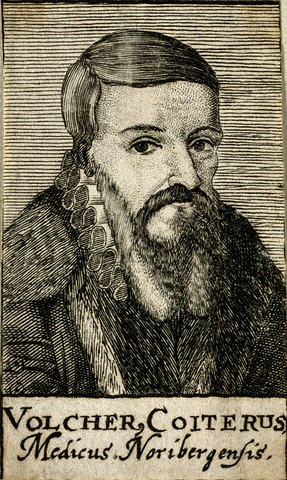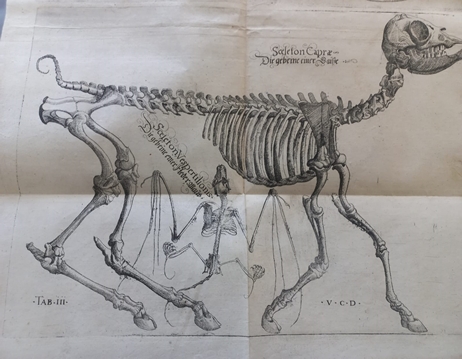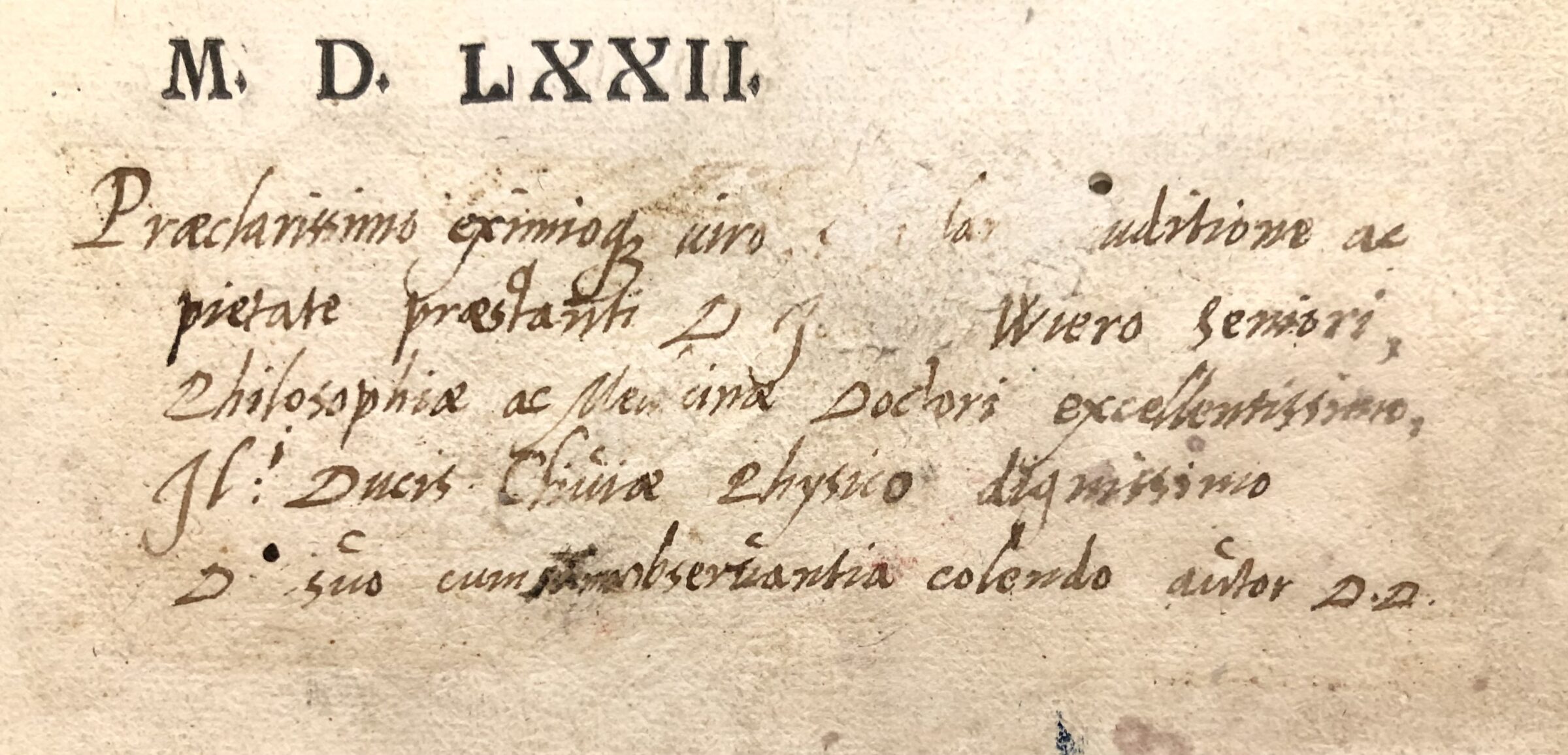These days, the Provinciehuis of Groningen can be found at this location in the Martinikerkhof, but this is where the Schole tho Sunte Meerten (Sint Maartenschool; Saint Martin’s School) used to be. This school in the heart of the city of Groningen played an important part in the life of Volcher Coiter (1534-1576). This life eventually led to the book that Coiter published in 1572: Externarum et internarum principalium humani corporis partium tabulae, i.e. “Illustrations of the principal external and internal parts of the human body.” While Volcher Coiter was a student at the Sint Maartenschool, Regnerus Praedinius (1510-1559) was headmaster of the school. Praedinius took the talented Coiter under his wing. The philosophical and religious beliefs that would play such an important part in Coiter’s life were partly instilled in him by Praedinius, who also taught theology and biology. Coiter’s mentor introduced him to humanism and taught him about religious differences. Thanks to Praedinius’ fame, the Sint Maartenschool attracted students from all over Europe. Maybe this inspired Coiter to travel around Europe as an academic.


The Sint Maartenschool offered Coiter the opportunity to become an academic because Praedinius noticed his talents. He was convinced that the young Coiter should continue his studies. He arranged a grant of twenty Emder guilders for a period of five years from the town council and Coiter embarked on his journey. He started his studies in Tübingen. From there, he travelled to the university of Montpellier, and then on to Bologna, where he graduated in medicine. Following his own humanist example, Erasmus of Rotterdam (1466-1536), Praedinius had inspired Coiter to be critical towards the Catholic church. This led to a radical change in Coiter’s life when he visited Rome for his studies. When he was confronted with the pomp and splendour of the Catholic church, he converted to Protestantism. As a Protestant, Coiter was arrested by the Roman police and he spent two months in prison. Two companions helped him to escape from his cell. Together, they fled to Nuremberg, where Coiter ended up living and working.
In Nuremberg, Coiter wrote and published his most important works, including this book about the major internal and external parts of the human body. It was an advanced book for its time: Coiter was the first to draw anatomical, naturalistic animal skeletons and to consider these serious drawings. He also signed his drawings. The tables in which he classified birds based on their build and behaviour were equally advanced. Coiter’s humanistic and empirical research methods were rooted in his education at the Sint Maartenschool.

In 1575, Coiter joined the army on its campaign in France to support the Huguenots. He died during this journey, probably of typhoid.

According to custom, he donated this copy of his book about the internal and external parts of the human body to a friend, the Dutch physician Johannes Wier. We know so thanks to the handwritten dedication by Coiter on the title page of this copy: ‘Aan zijn met de meeste hoogachting te vereren vriend, de befaamde en uitzonderlijke … door zijn geleerdheid en vroomheid vooraanstaande heer Johannes Wier, doctor in de filosofie en de geneeskunde, illustere en meer dan waardige lijfarts van de Hertog van Kleef, heeft de auteur dit boek geschonken.’ (‘To his most esteemed friend, the famous and exceptional … Johannes Wier, notable for his erudition and piety, doctor in philosophy and medicine, illustrious and more than worthy personal physician of the Duke of Cleves, the author has gifted this book.’) Coiter himself never returned to Groningen, but this copy of his magnum opus did.
Author: Kim Dokter







